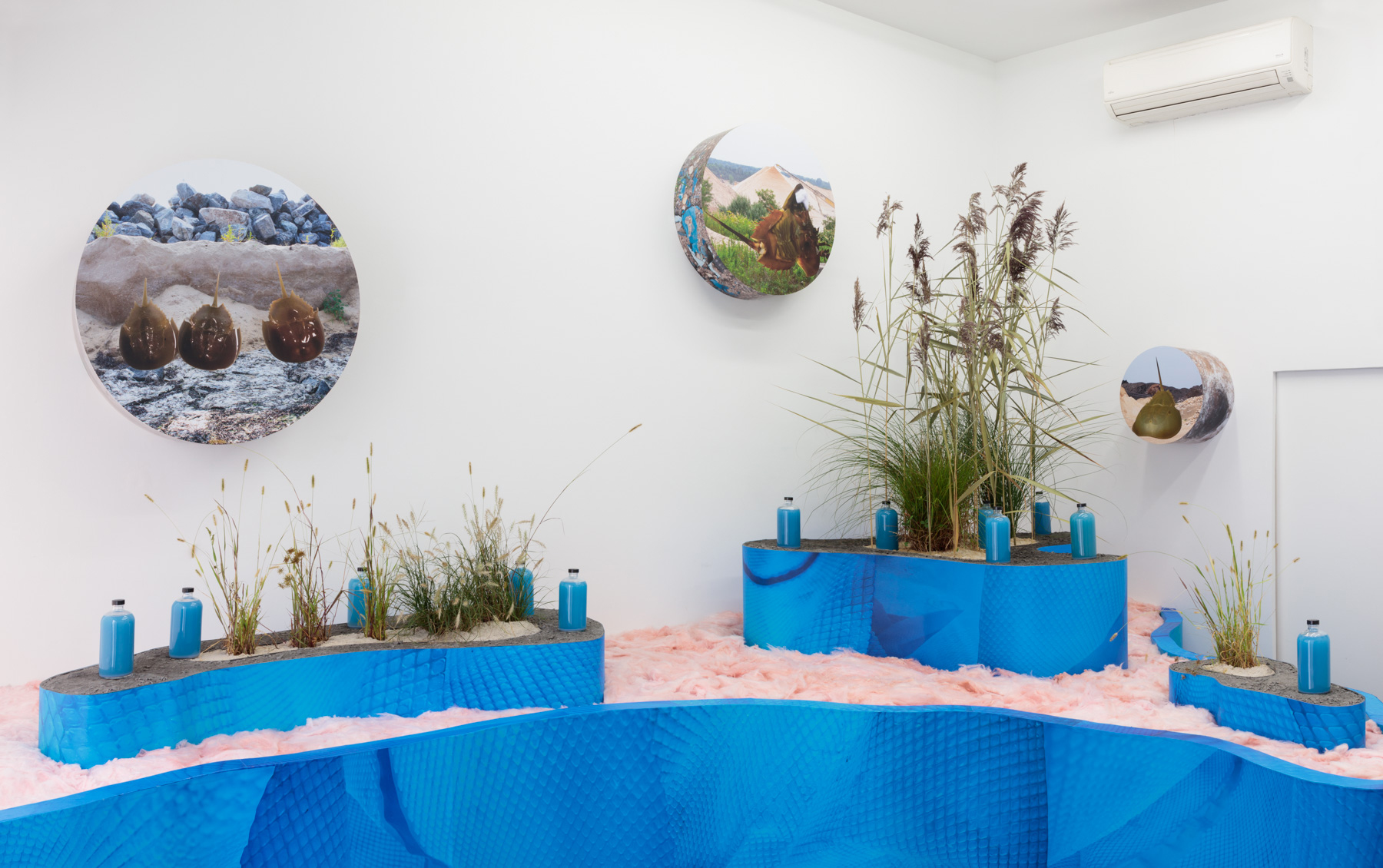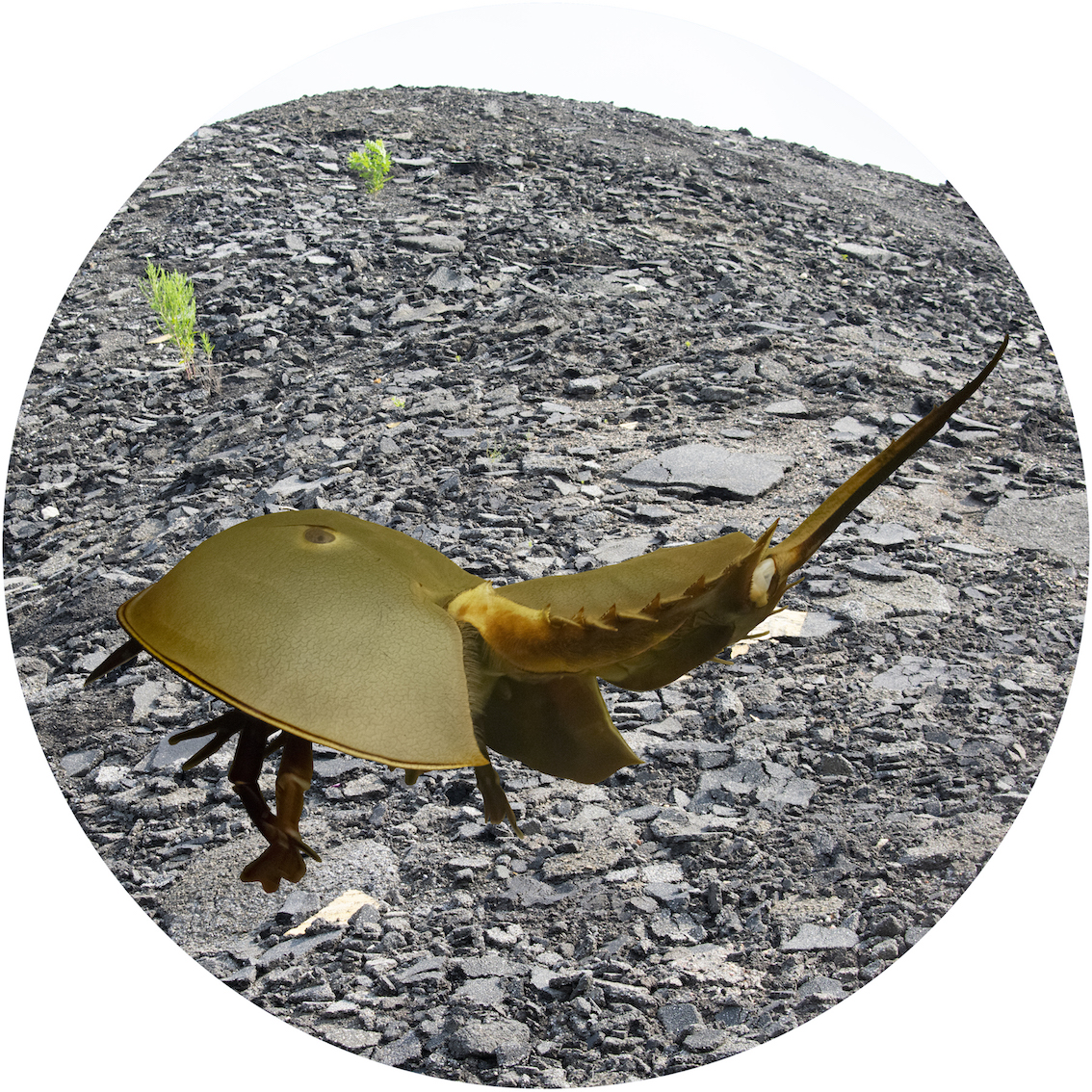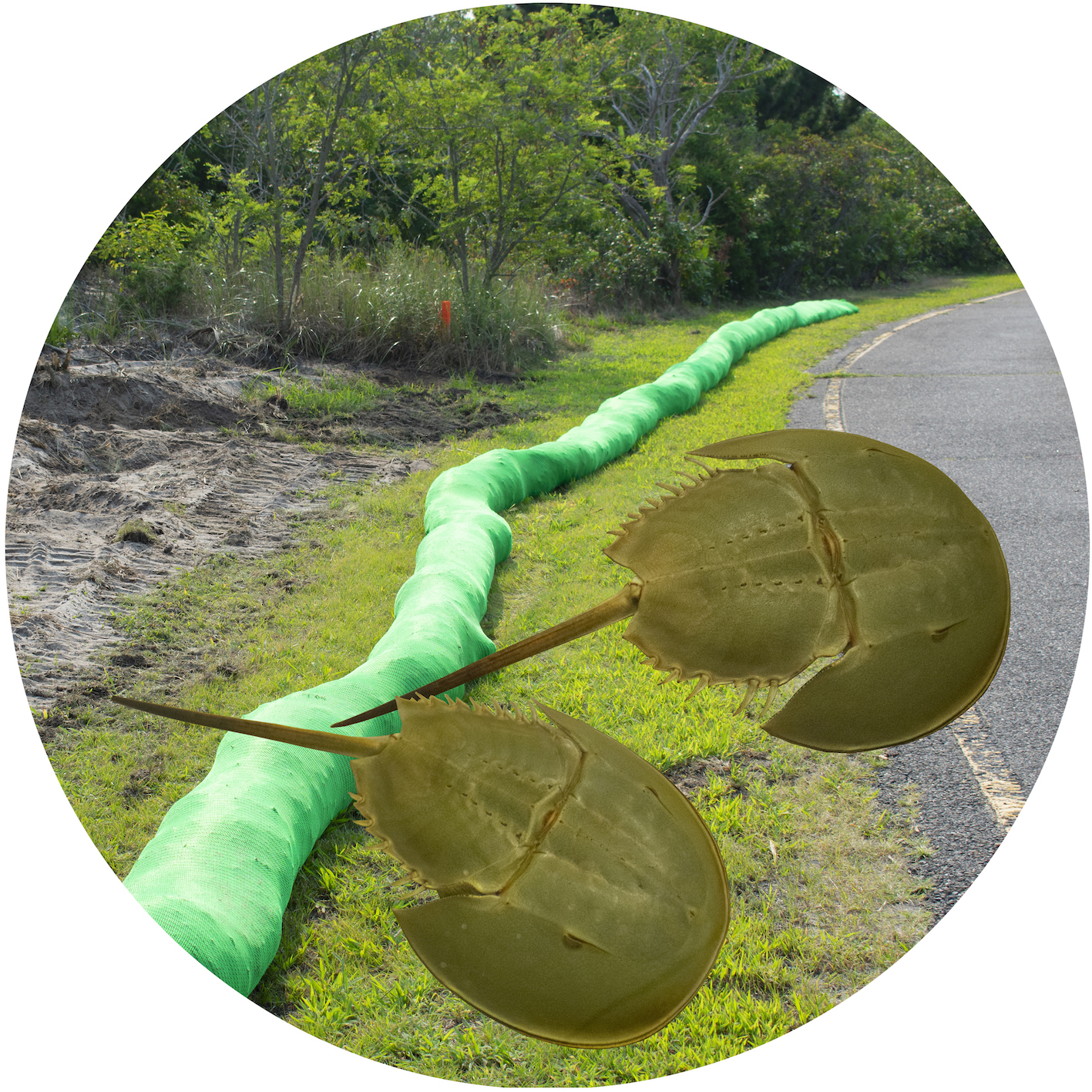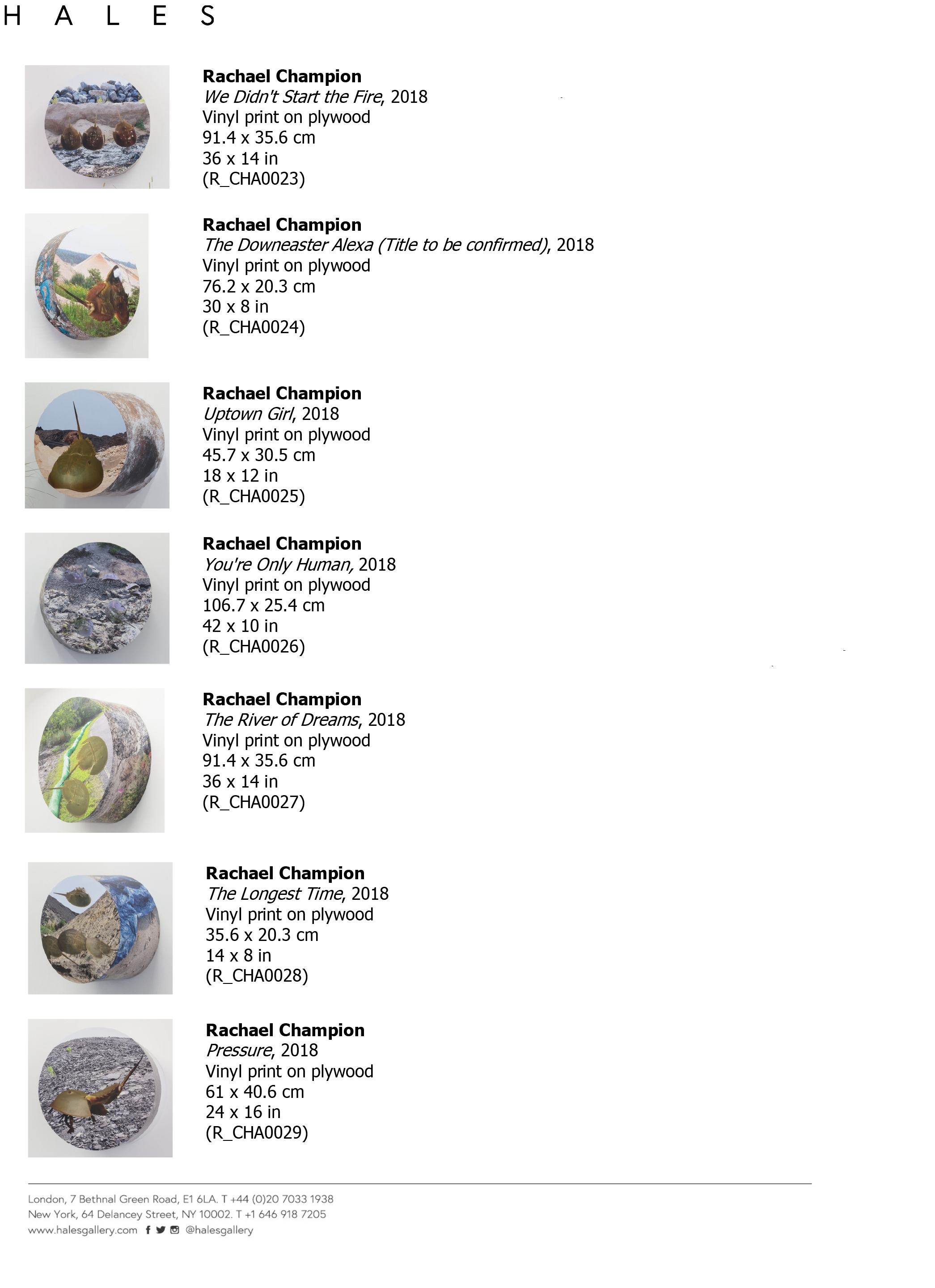Interstate 495 is a Terminal Moraine, 2018
Dimensions Variable
Materials: adhesive vinyl over plywood, black landscaping mulch, insulation, driveway mix, sand, pigments, water, laboratory bottles, dried Phragmites, Fountain grass, Little Blue Stem grass
Hales Project Room, New York, NY, USA
Molloy College, Rockville Center, NY, USA
Hales Gallery photos: Stan Narten
The site of interest in Interstate 495 is a Terminal Moraine is Champion’s birthplace, Long Island, NY. For this exhibition, Champion delves into the paleohistory of Long Island and its manifestation in contemporary life. The title of the exhibition uses Interstate 495 (also known as the “Long Island Expressway,” “L.I.E.,” and “The Expressway”) as a metaphor to link these deep time relationships. I- 495 runs through the very center of Long Island and functions as the primary vehicular conduit to one of the most densely populated places in the US. The road is situated along a terminal moraine left over from the receding glaciers of the Earth’s most recent Ice Age.
Central to the exhibition is an investigation into the Atlantic horseshoe crab (Limulus polyphemus), a 450-million-year-old species of arthropods, which live in the shallow coastal waters on the Eastern seaboard of the United States. This species of great prehistoric significance plays a paramount role in the biomedical industry due to the extraordinary characteristics of their blue blood, which is routinely extracted for the detection and quantification of bacterial endotoxins. For Interstate 495 is a Terminal Moraine, Champion has collaborated with CERCOM, Molloy College’s Center for Environmental Research and Coastal Ocean Monitoring. This marine science laboratory located on the Great South Bay studies the Atlantic horseshoe crab through captive breeding and conservation research.
The installation, which sprawls along the floor of the gallery, integrates textures of suburbia with coastal plant life native to the shores of Long Island. Floating amongst the sea of pink fiberglass insulation foam are bottles of an opaque blue liquid, a facsimile of Limulus Amebocyte Lysate (LAL), the blood of the Atlantic horseshoe crab. A series of cylindrical photographic sculptures that collage imagery from CERCOM and a variety of Long Island landscapes punctuate the adjacent wall and feature both industrial areas where raw materials are extracted, processed, and recycled and the natural habitats of the Atlantic horseshoe crab, including Captree Island in the Great South Bay and McAllister County Park on the Long Island Sound. Contrasting industrial supplies with ecological matter, Champion calls into question our interrelated expectations of the two as they fit into Long Island’s rich and evolving material history.
Special thanks to John Tanacredi and Kyle Maurelli at CERCOM and Lily Bruder at Vanishing Point Farm.





















